Advantages
Consider reverse-cycle heat pump hydronic cooling as an alternate to air conditioning for summer cooling.
- Hydronic heat pumps heat and cool whereas gas boilers heat only.
- One outdoor unit for heating and cooling is beneficial for space constrained inner-city dwellings.
- Heat pumps use small water lines to transfer heat which is ideal for cathedral ceilings, multi-levels or extensions with minimal room for air ducts.
- Hydronic water lines have no global warming potential.
Contact us to explore your best options.
Two Types of Cooling
Hydronic heat pumps provide cooling in two ways:
- Chilled water below the dew point absorbs both sensible heat (heat only) and latent heat (from moisture absorption). Choose hydronic fan coil convectors for both sensible and latent cooling (total cooling). They are designed to manage chilled water and dehumidification.
- Cool water above the dew point absorbs sensible heat only but cannot dehumidify. Therefore, choose underfloor hydronic cooling in the drier climates of southern and inland Australia.
If you choose underfloor hydronic cooling, Hydrosol recommends combining this with good thermal performance, summer shading and ceiling fans.
More information: Case Study
Latent Cooling Explained
Latent cooling relies on a principle of physics, where a liquid expanding into a gas draws heat from what it touches as it evaporates. This is the purpose of sweating in summer, in keeping our bodies at the correct temperature. Air flow helps this process.
Simple Test
Try wetting one finger and feel the difference compared to your dry fingers. Now blow air across your wet finger and feel the greater difference as the moisture evaporates more quickly.
Heat Pump Hydronic Cooling – Underfloor
Underfloor hydronic systems are chosen mainly for the luxuriant heating they provide. However, they can also provide area cooling with a hydronic heat pump in reverse cycle. They do this by running cool water through PEX pipes under your floor above the dew point, but they cannot absorb moisture.
With a floor temperature of around 18 degrees in summer, it feels nice on your bare feet and well above the dew point. Also, this is a useful temperature difference that can absorb warmer room-heat, to cool your room. With ceiling fans, you can raise your room set temperature by a few degrees and still feel cool. This will reduce your operating costs.
Area cooling works best in a dry climate with summer shading and ceiling fans circulating warm air across your large cool surface area. Shading is important to prevent sunshine radiation overpowering your underfloor cooling system.
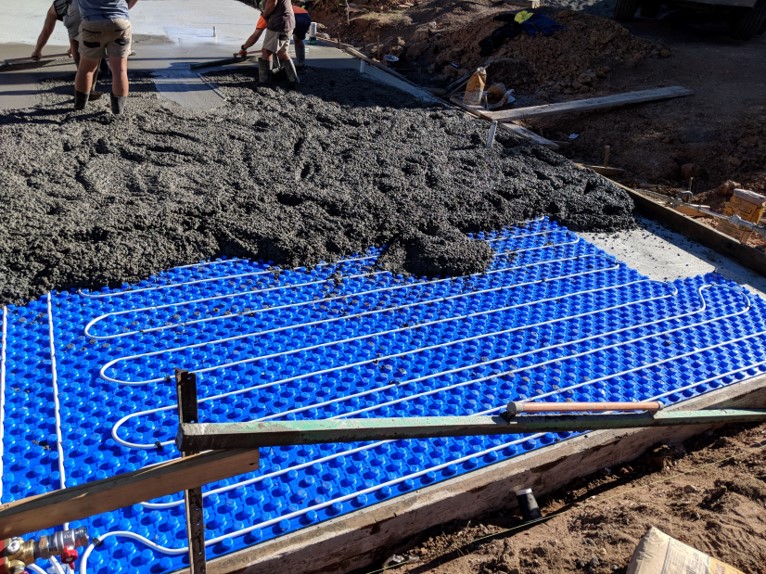
Heat Pump Hydronic Cooling – Fan Coil Convectors
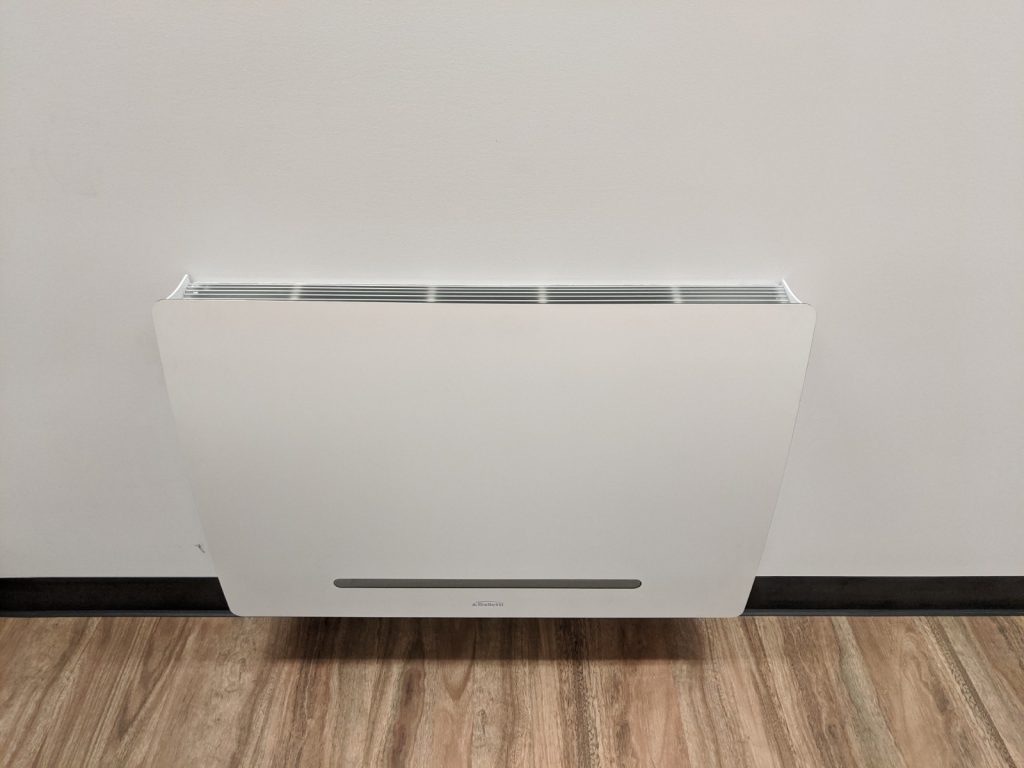
Wall Mounted Fan Coil Convectors
Consider the stylish and highly acclaimed Galletti ART-U fan coil convector range. They are efficient, effective and very quiet.
Mount your ART-U convectors low on your walls which is better for heating. In cooling mode, the internal fan at higher speed will push cool air up towards the ceiling allowing it to fall naturally around your room.
ART-U convectors provide both sensible temperature and latent cooling. Condensation is drained outside.
In winter, hot water from your heat pump is circulated through both your convectors and radiator panels.
Concealed Fan Coil Convectors
Install concealed type fan coil convectors inside walls or above ceilings as another option from wall and ceiling mounted types.
Add ducting to your concealed convectors to distribute cool air to nearby rooms.
Design drop ceilings above robes and cupboards if above ceiling space is limited to mount your concealed convectors.
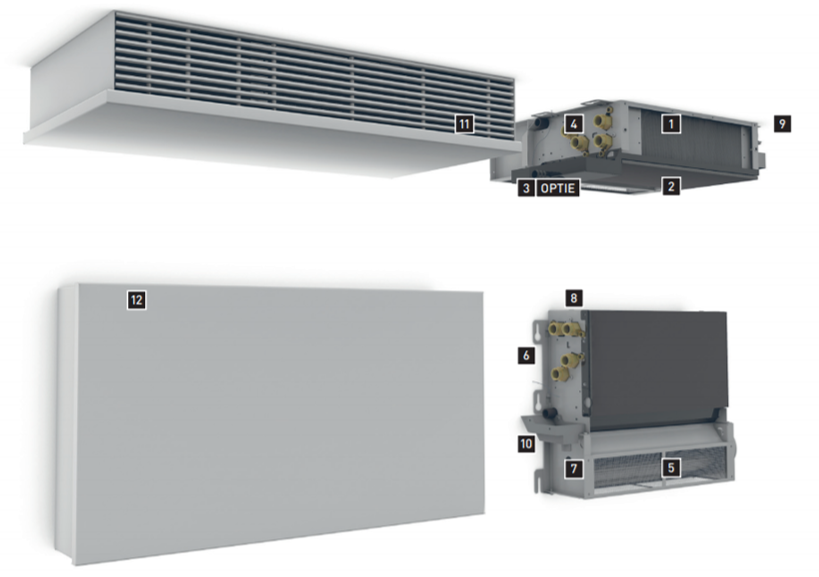
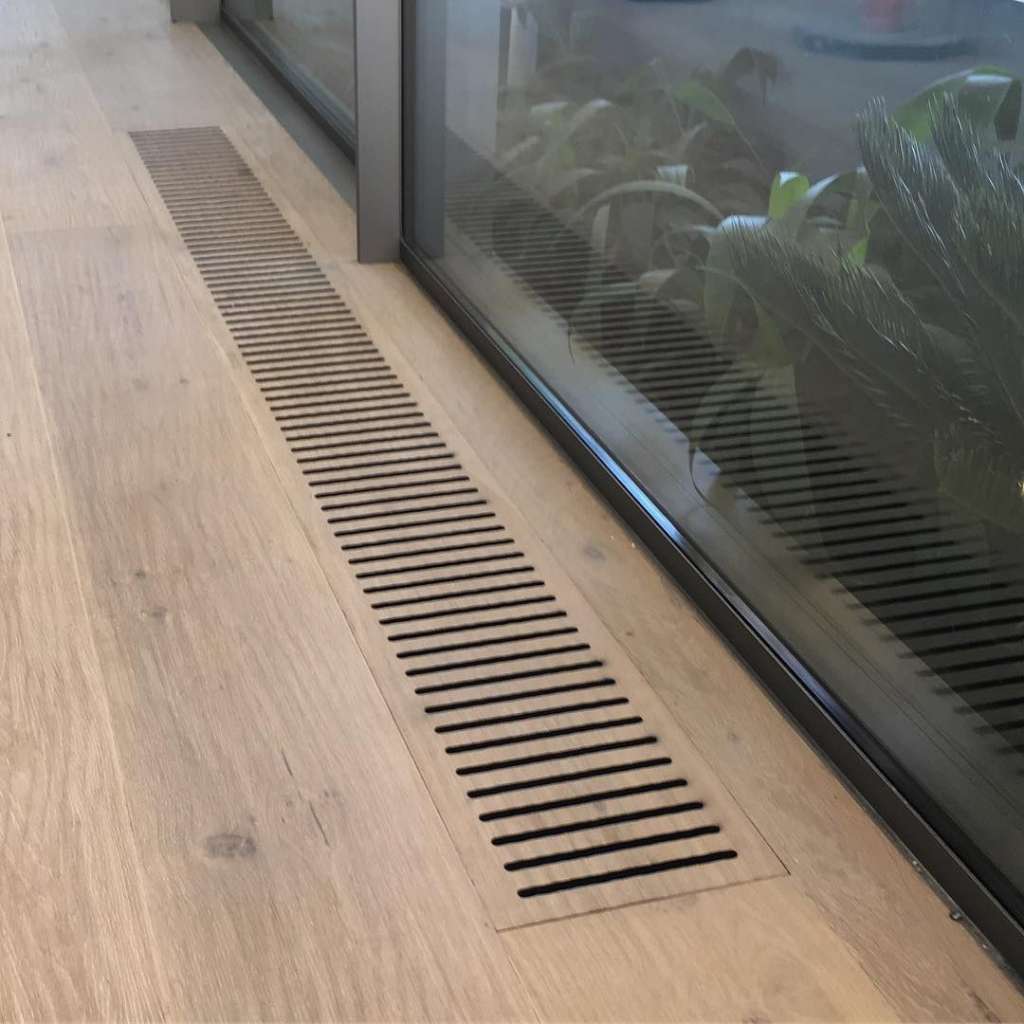
Trench Convectors
Trench convectors are a good option for buildings with suspended floors where space for radiator panels is limited. This is often the case with Kitchen / Family areas with extensive glass windows and doors.
Choose the optional integrated fan if you plan to operate your heat pump in reverse cycle. In summer, this will provide effective cooling by drawing room heat through the chilled convector coils.
Install trench fan coil convectors in suspended floors parallel to floor joists. Locate them beside windows or glass doors because they are designed for foot traffic.
Match the grilles to your flooring.
Hydronic Radiator Panels
Radiator panels are not designed for chilled water. Therefore, consider adding fan coil convectors with a heat pump for summer cooling. This can be an alternate to air conditioning particularly for two storey houses.
However, you will need to install a second heating and cooling convector circuit. Then your radiator panel circuit can be switched off automatically when your heat pump reverses its cycle for cooling.
Use your convectors in winter to provide heating as well as your radiator panels. The fan inside the convector helps draw cold air through the heated coils, which provides a heat up boost. Your radiator panels do this naturally through convection, as well as radiating heat from the panels.
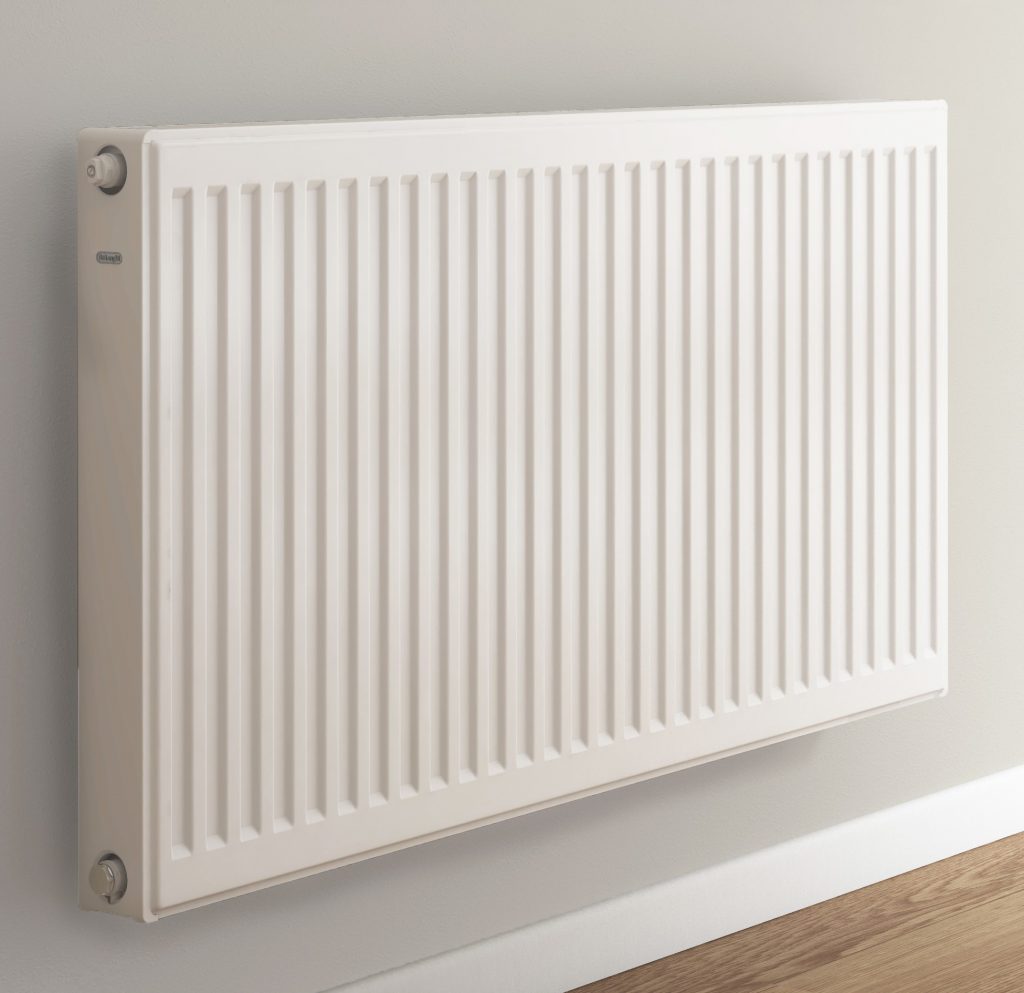
Heat Transfer Rate
The rate of heat transfer for hydronic cooling in summer depends on the following:
- Temperature difference between the water in your hydronic coils and the air in your room. Therefore, chilled water at 7 degrees through convectors is very effective at room cooling.
- Surface area of the underfloor circuits. Underfloor area cooling using cool water relies on a large surface area to be effective.
- Rate of air flow across the surface area of the hydronic coils. Air movement increases the rate of heat transfer from convection.
- Humidity. The drier the air, the easier it is to cool.
Humidity & Cooling
- Consider underfloor area cooling with hydronic heat pumps in southern or inland Australian climates. The dryer air needs little or no dehumidification to feel pleasantly cool.
- Add fan coil convectors if you are concerned about humidity. They will dry the air and provide additional latent cooling using chilled water below the dew point.
- For a two storey house, consider a combination of hydronic underfloor circuits on the Ground Floor and fan coil convectors on the First Floor.
Fans & Shading
Turn on a fan and your perceived temperature will drop by around 4 degrees. This will make a room of 27 degrees feel comfortable immediately. Fans create air movement. Therefore, they are ideal with hydronic cooling systems. There are many suitable fans on the market including:
- Ceiling fans, that also assist your Star Rating
- Floor and desk portable fans for heat waves
- Air conditioning indoor units with air flow mode
Consider summer strategies shading including:
- Appropriately designed eaves or slatted pergolas for northern windows
- Deciduous trees or vines shading western and eastern windows
- Retractable awnings shading western and eastern windows
Thermal Mass
Construct your house with plenty of internal thermal mass if it is located in a southern or cold inland Australian climate. Create building mass with concrete floors, internal bricks, concrete walls and/or an over-sized buffer tank.
Also, make sure your house is thermally efficient with a Star Rating of at least 6.
Run your heat pump hydronic cooling system during the day with your solar power for low-cost operation. Turn your system down or off at night for heat to re-radiate from or absorb into your thermal mass.
Enlarge your buffer tank if your home is of lightweight construction. Water is a good store of thermal energy. Read more: Thermal Battery
Contact us to explore heat pump hydronic cooling for your project.
